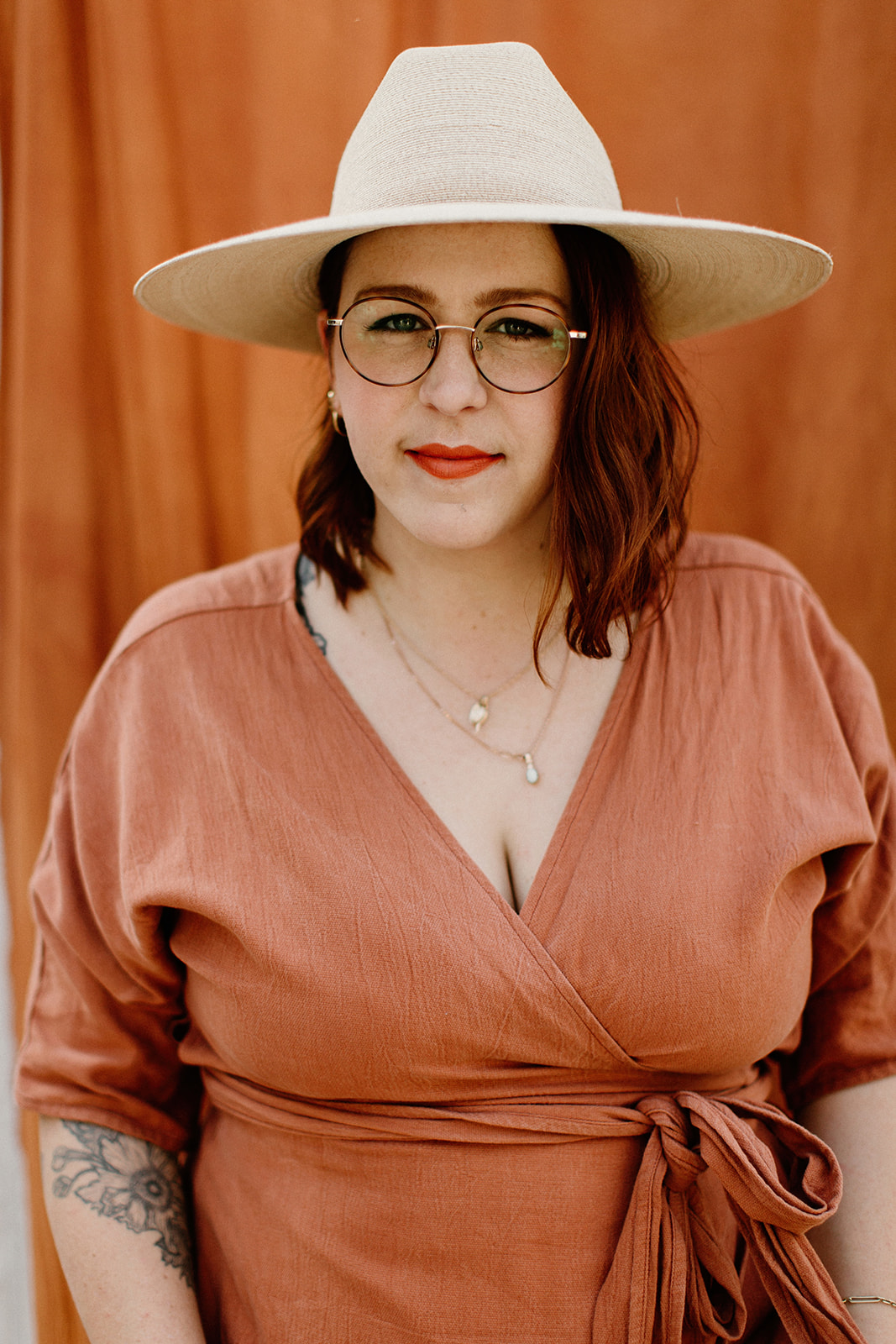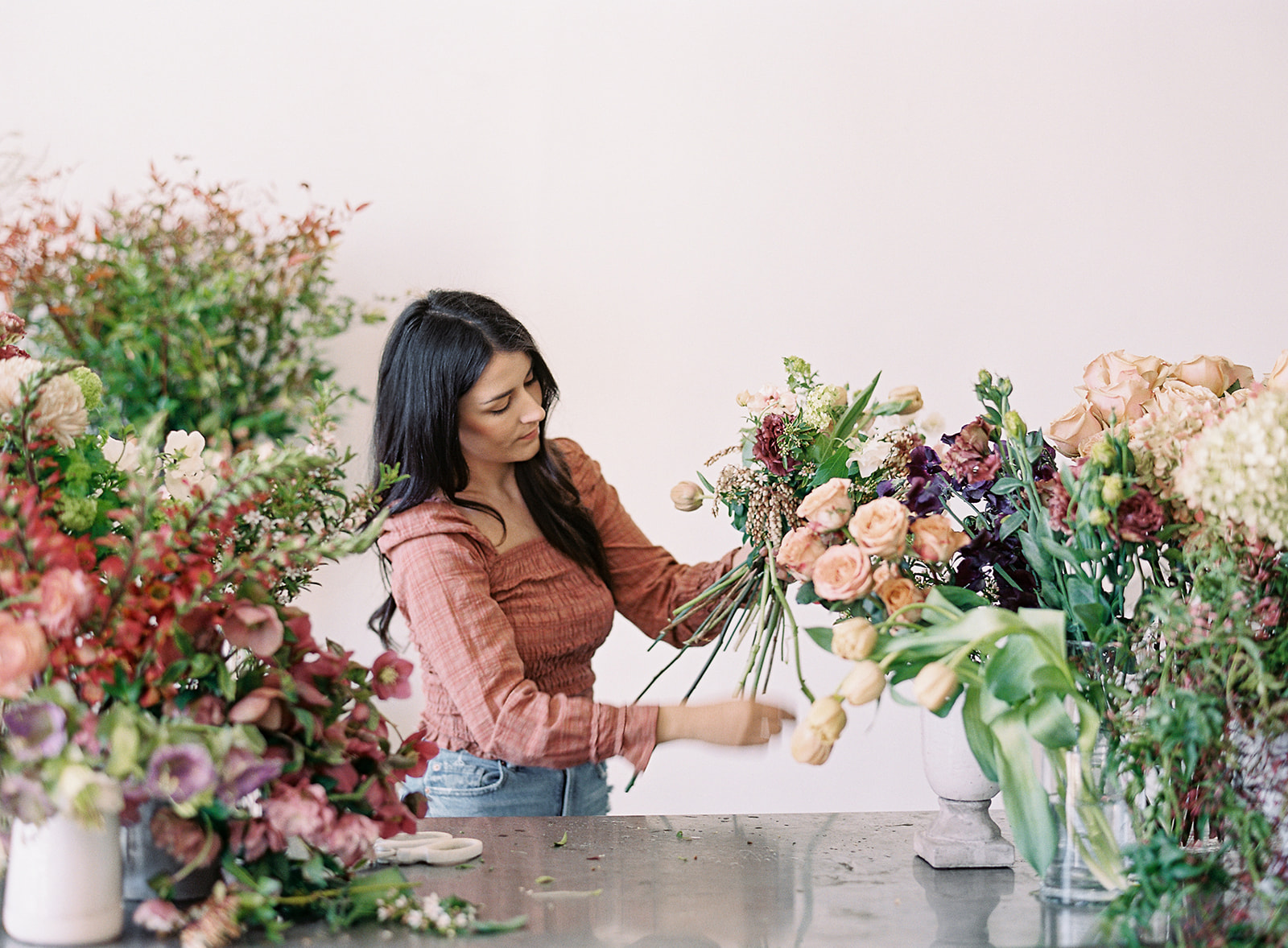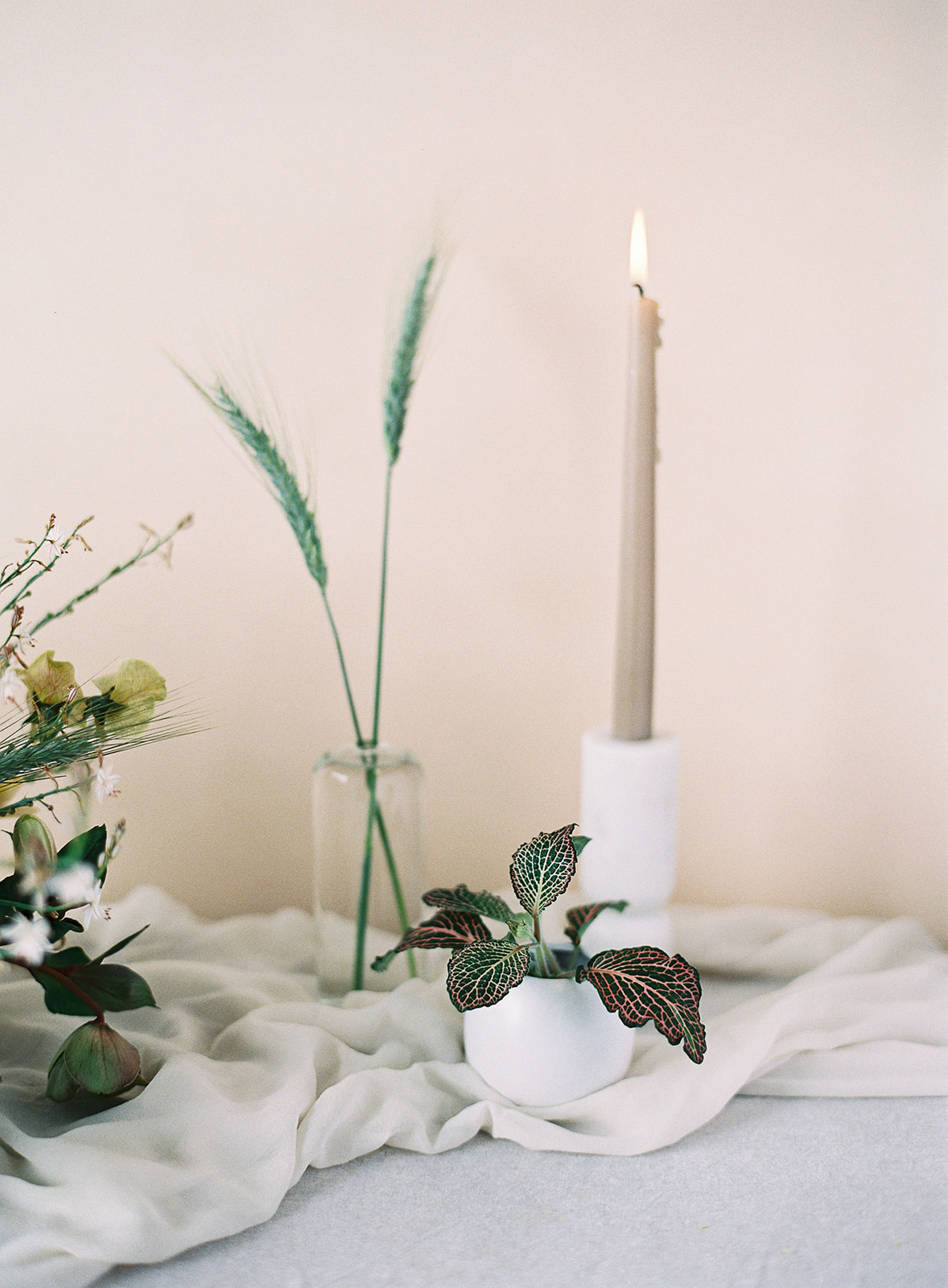Hey Flower Friends! I am so grateful that you’re here and excited for another week of sharing with you my best tips for growing a successful and thriving business around your creative passions.
If we think about the core components of a successful business, there are really 4 main parts to the equation. Part 1 is you need prospects or potential buyers (your audience), part 2 is you need an offer (or a product to sell), part 3, you need a method of selling your product (your business model) and part 4, you need to make sales.
Over the last several weeks, we’ve looked at a few of these key Puzzle pieces in depth. In episode 5 I shared with you my best strategies for being profitable in your business. In episode 6 we looked at how there are different business models and ways to structure your business to fit into your ideal life. In episode 7 I talked about your presence on social media and using connection as a means for growing your audience.
Yet there is one topic that we have yet to delve into in depth which is: your offer – or the actual product that you’re selling. Now, if you’re a florist listening to this (which I believe many of you are) you’re probably thinking, well obviously I sell flowers, that’s what I sell. How much is there to really talk about? But actually, giving a great deal of thought to your product or offering is hugely important and can affect the success of your business in many ways – some ways that you may have never even thought about.
Your product is quite possibly the most important component of your business. Because no matter how many prospects or customers you have, and no matter how good you are at sales, and no matter how clear you are on your business model, your business is nothing without a product to sell. And if you don’t understand your product – truly and fully and intimately – from the way it’s structured or built to why it’s priced the way it is and how it can serve your customer, you can not properly sell your product, and you might have a hard time growing and making money.
Today I want to talk about what having a product or offering truly means, why getting clear on your product is so important, the process of designing a signature product or offering, as well as the importance of expanding, evolving, or adding to your offerings and the role this plays in your business growth. If you have listened to my past episodes, you know that I am a big picture kinda girl and strong believer in finding motivation for our decisions and actions by looking towards the future and what we want to achieve. By the end of this episode you are going to see why this is such an important key concept in achieving real wealth in your business. So let’s get started.
What is your product?
Alright friends, today we’re talking all about knowing your product and we’re going to just dive right in with the first part of our topic which is – What is your product, really?
If you are a wedding florist, in a general sense, flowers may be the thing you sell, but your product is more contextual. Your product is the service that you provide, it’s the unique designs you create, it’s the way you package them and present them, and the way the individual pieces make up an overall design. All of these things make up your product. Your product is the experience that you offer to your clients through your flowers. That is what you offer and that is what they are paying for. Your product is really your service.
And you may offer a wide list of different products. Or, you might have variations of one product in the same way that consultants have different tiers of services or the way photographers have different packages.
Get Clear on Your Product
In order to really be successful with both selling and marketing, you must know your product inside and out.
How well do you know yours? How familiar are you with the service you offer and what exactly your clients are getting when they hire you? I guarantee you that your product is so much more than what you think it is. Your product is not just the arrangements or whatever the product is you sell – it includes your talents, your customer experience, your process, and so many other nuances that set your product apart from others in your industry. Getting to know your product better will allow you to lean into your strengths, and the things that your company does really well, and channel that awareness into your sales strategy, your marketing, and your branding, giving you a competitive edge.
How can you get to know your product better? One way is to take a look at it from an outside perspective, by looking at what others say about your work. Pay attention to the comments that people leave on your social media posts, or the remarks that you hear about your work when you’re at setups. If your clients have ever left you reviews or testimonials, study those and look for key terms that share what your clients feel is truly special about the service you provide. Getting to know your product from an outside perspective can help you sharpen your understanding of all of the unique nuances that you bring to the table.
Start paying attention to what your company does really well. Start doing a simple assessment after events and noting what worked well and what didn’t work. Pay attention to the things where most of your sales and profits are coming from. When you are in production or at a setup, notice when things really feel smooth and effortless, and that can give you a clue as to the zone where your company and your team really thrives.
Tailor Your Offerings
The more you become clear on your brand’s unique zone of genius, you can start to tailor your offerings around those things so that your entire business operation becomes more effortless and more streamlined. Getting clear on the specific products or services you offer will allow you to confidently make decisions during the sales process to both guide your aligned clients towards hiring you for your service, and repel the clients who you know will not benefit from your services.
A couple of years ago I restructured my packages and decided to only offer full service. This means that when a client hires us, we provide all of the florals, vessels, candles, and decor. In this way, we can retain full creative control over the final product that is delivered, ensuring that each of our weddings upholds our client’s expectations and appropriately reflects the quality of our brand aesthetic. So if during the consultation process, a bride asks me if she can DIY her own candle decor, I respond by giving her the choice of utilizing our candles, or respectfully suggesting that we may not be the best fit, because I know with confidence that an incomplete or partial table look is not the experience that we offer.
Designing Your Signature Product
Designing your exact product or offering is not something that happens overnight or in one sitting. Getting clear on your product is something that you can more confidently refine and shape over time through experimentation and getting more familiar with your strengths, your specialty, and what sets you apart from other brands. I refer to this refinement process as building and designing your signature product. If you’re listening to this and thinking to yourself that you’re unclear on what your signature product should be, then that might mean that you are still in the experimental phase of growing your business, and you are trying out many different types of products, offers, or services. And I would not advise you to set a strict list of offerings without having gone through that experimentation phase and fully explored all possible avenues.
But once you’ve explored those avenues for a while and it starts to become clear to you what you enjoy the most, what you’re most passionate about, what you’re best at, and what generates the most revenue, you can start to refine and hone your offerings to focus on a few key products or services.
And as you build out your collection of offerings, there are different ways you can structure it. You might be a wedding planner and only have one offering which is full service planning. Or, you might have one niche but offer a wide array of services within that niche. For example, you are a florist and you offer full wedding design, partial wedding design, personals packages, and a la carte floral arrangements. Or, you might be multi-passionate and you enjoy offering a wide array of different services. Maybe you’re primarily a florist, but you also offer wedding coordination, and some party planning, maybe you have a collection of rental inventory, and maybe you’d even be open to designing a client’s invitations or place cards if they asked.
Buckle Up, Niche Down
There is nothing wrong with having a more broad collection of offerings as long as they are all profitable and as long as you can make it make sense from a marketing perspective without confusing your audience. But, if you’re really serious about your business, it is wise to pare down to the parts of your business that really drive revenue because this will allow you to streamline, maximize efficiency and make room for the things that are going to generate more revenue. While it’s true that more offers can equal more sales, if some of your offers are not generating sales or profit, at some point they could actually be costing you because they are taking up time and energy that could be put full force into something that is making you money. And not only that, sometimes when you are trying to speak to too many people by offering too many things, you are not effectively reaching anyone because you’re not speaking clearly and directly to the people who are looking for just one thing.
I’ll give you a real life example. My husband and I are in the process of designing our backyard and we are wanting to replace our sliding door with a set of iron french doors. So while I was searching the internet the other day for patio doors, I came across several different results. I clicked on one link and this company offered windows, window coverings, patio doors of all types, including french doors in a variety of materials and styles. I clicked on another company that was literally called ‘Iron French Doors’. This company had one specialty and it was literally what I was searching for so it made my decision extremely easy. While the first company assured me they had a wide selection of doors, I wasn’t 100% sure that they were going to offer what I was looking for or do a quality job because they have so many different specialties. But with the second company I knew with confidence that they not only carried what I was looking for but would do a quality job because this was the one look they specialize in. So I knew immediately I wanted to give that company my business.
By having a more narrow specialty, you not only make the decision easy for your prospective clients, but you also have the ability to streamline your process so you work smarter – not harder, can bust out jobs with better efficiency and with more consistent results, and even be more fulfilled by your work if that thing you specialize in is what you are best at and truly passionate about.
Own What You’re Best At
You can create a more impactful, more quality client experience by honing in on what you do best. At a certain point in my business I started to experience a pattern of frustration associated with certain budgets that were limiting to my creativity. I realized that half the time, my clients budget didn’t allow me to deliver what I believed to be the complete package. They would have enough money for bouquets, an arch and centerpieces but not enough to splurge for candles. So I would have to either deliver the proposal without candles, or I would try and stretch the budget and in doing so I would have to water down the individual items by making them less full or not using premium flowers. And I would often leave the wedding or receive the photos and feel a little dissatisfied because I knew that the wedding didn’t fully show our best work, and therefore it didn’t really represent our brand in the best way.
And so it was then that I decided that I needed to have minimum set prices for each item that insured I could represent my brand and style to its fullest. Centerpieces would start at x amount. Bouquets would start at x. On a package level, I wanted to make sure that when a client hired me, they were going to get what I felt to be a complete package, even if they were buying in at an entry level. I have been doing weddings long enough to know that 99% of the clients who inquire want an arch, they want centerpieces, they want bouquets, and they want candles. I decided that every wedding we do should – at the very minimum – include these things. I began to understand that my clients expectations were drawn from the vision put forth in my portfolio imagery which was the very work that attracted them to me in the first place. I thought, if the minimum package on my menu doesn’t accurately represent my brand and what is being advertised, then why even offer it?
Designing My Signature Product – The Process
This was when I came up with the idea of designing a signature product.
I thought to myself, if I could create a signature product, or my perfect wedding package that would allow me to really shine, what would that look like? What items would be included? And how they would be priced? And then from there, I could add in things like my customer experience, my proposal process, and my delivery experience, and then I would finally have this very clear picture of the full package that a bride gets when they hire Mulberry & Moss.
I grabbed a pen and paper and I began listing out all of the items I believed to be essential to creating a complete product – a product I could be proud of. And I gave each item pricing that I knew would not be restricting, and through that I came up with some hypothetical packages. A minimal or entry level package, which I called “signature” and a more upleveled package which I called “premium.” These weren’t really packages per se, because every wedding floral package is based on a client’s specific quantities, but it gave me an idea or a baseline of all of the essentials for a small-to-regular size guest count. I based my lower hypothetical package on a guest count of 100 and a bridal party size of 4, and I based my premium package on a guest count of 200. For the premium package I also included a few more additional details that I see commonly requested by my higher level clients like aisle arrangements, lounge pieces, bar pieces, and tapered candles.
This sample packages and pricing exercise was just for me. To help me understand what my work should be valued at. To make sure I wasn’t accepting jobs that didn’t align with my brand, and to help me in my selling process. So that when it came time to talk numbers, I wasn’t grasping for numbers out of nowhere, getting flustered, or reinventing the wheel every time I went to price a wedding. When I received a new inquiry and looked at that bride’s budget and wish list, I could easily see sort of what package or what price point she would fall into. I now understood roughly what a budget of $7500 could get my client. I knew what $10,000 could get them. I knew that if they had a larger than average size bridal party, or a guest count of over 200, that this would increase the cost. I knew if they had rectangular tables this would increase the cost, because they require more flowers than a standard round. I knew if a client had a guest count of 100 but wanted lots of bells and whistles and upgrades, they’d be moving more into premium package territory.
This is how deeply you should know and understand your products and your pricing. You should know it like the back of your hand so that you can sell more confidently and more profitably.
What I’ve Learned
Now, I’ve talked at length about a signature product and it’s because I’ve put time and effort into this. And I have done that because that product is what drives 70% of the income in my business. My full service wedding floral design packages are the bread and butter of my business, and not just that, it’s what I’m best at. It’s what my brand is recognized for. It’s what I love doing. And that’s why I’ve honed this offering and fine tuned it so that the work we do is consistent, it’s efficient, it’s rather cookie cutter in form to be honest – but I prefer that because it’s easier on my team, it’s more efficient, which means its more profitable, I’m not spinning wheels doing extra legwork going out of my way to deliver something that’s not in my wheel house just because the client asked for it and I feel that because they asked for it I am required to bend over backwards.
If you want a hanging installation over a ballroom and a floral covered trapeze circus? Go hire a florist who specializes in that. You want ballroom ceiling miracles, I’m not your girl. And I know that because during that experimental phase that I talked about earlier, I did the ceiling thing. And I was like, nope. And it could have gone either way. If I had tried the ceiling thing and it fired me up and I was like heck yes I want to flower every ceiling, please come at me with your ceiling installation dreams, I am here for it. Then you bet I would have poured my resources into perfecting that side and honing that side of my business. And that’s why I’m grateful for that experimentation phase and it was so essential to my process of honing and refining my niche because I tried it all and I can say with confidence now I’m Mulberry & Moss and I create timeless garden airy magic, with seasonal tablescapes and premium details for intimate to medium size weddings with an outdoor aesthetic. That is who we are. That is my signature product. And because I took the time to really pull apart and understand my product, I know exactly what it costs, what it takes to produce it, the type of team i need to install it, how much van space it requires to load it, what tools are needed, I know it inside and out and because of that I can market more directly, I can produce more efficiently, I can sell easier, and therefore I can streamline sales and production which ultimately drives my success and makes my business what it is today. And what allows me to focus more on the things that I enjoy.
Products + Offerings May Change and Evolve
This brings me to one final thought I want to share with you. I mentioned that streamlining my process has helped me to free up time and in buying myself that time back I’ve been able to explore other offerings that I’ve wanted to explore.
If you listen to my podcast you know that I am very big on the idea that you must allow yourself to change and evolve with your business. It is not any of our goal to build a cage for ourselves, what most of us want more than anything is freedom – freedom to be creative, freedom to make money in a way that brings us joy. So we don’t want to build a cage for ourselves. We want to allow our products and our offerings to change, to evolve, to grow, to expand and to multiply.
In the last couple of years I added floral education to my offerings. I also now have a digital product catalog.
I used to deliver a weekly restaurant account every Thursday, now I host a podcast on Thursdays. And this avenue didn’t replace income but it brings me joy. And I was able to give up that small weekly income because I had spent the past few years streamlining my wedding process, refining and raising my pricing, growing my educational offerings and maximizing my income in those areas of my business so that I didn’t need the weekly accounts anymore that were taking up precious time in my schedule.
It’s common to hit a ceiling after a while if you offer only one thing, especially if that product or service is something that requires your physical time, because time is a limited resource. So if you want to continue to grow and to scale, it’s very likely that you will come to a point where you may want to expand your offerings. So let’s just be a reminder to you in a little voice in the back of your head to remain open in your business journey. Being chronically open and willing to learn, to change, to grow, to pivot and to evolve in your business will open doors to more opportunities.
In Conclusion:
So, let’s recap! It’s important to not just know what you sell but to really dissect and hone and perfect your offering so that you know and understand it backwards and forwards. This process will allow you to understand how to charge appropriately, so that you can do more meaningful and purposeful work, it will help you to sell easier, to market yourself, to reach your ideal clients more directly, and it will streamline your backend production so that your company can operate like a well oiled machine. That is a long list of positive reasons my friend. Like I mentioned at the very beginning of this episode, your product might just be the most important player in your business’s success. Now can you see why?
So, what else can I say? I hope this is your sign to start honing and polishing your product or service and to get clear on truly what it is that you offer. I want your business to feel like a breeze. Have a great rest of your week, as always thank you for listening. Now, go out there and do what you do best. Bye for now.






add a comment
+ COMMENTS